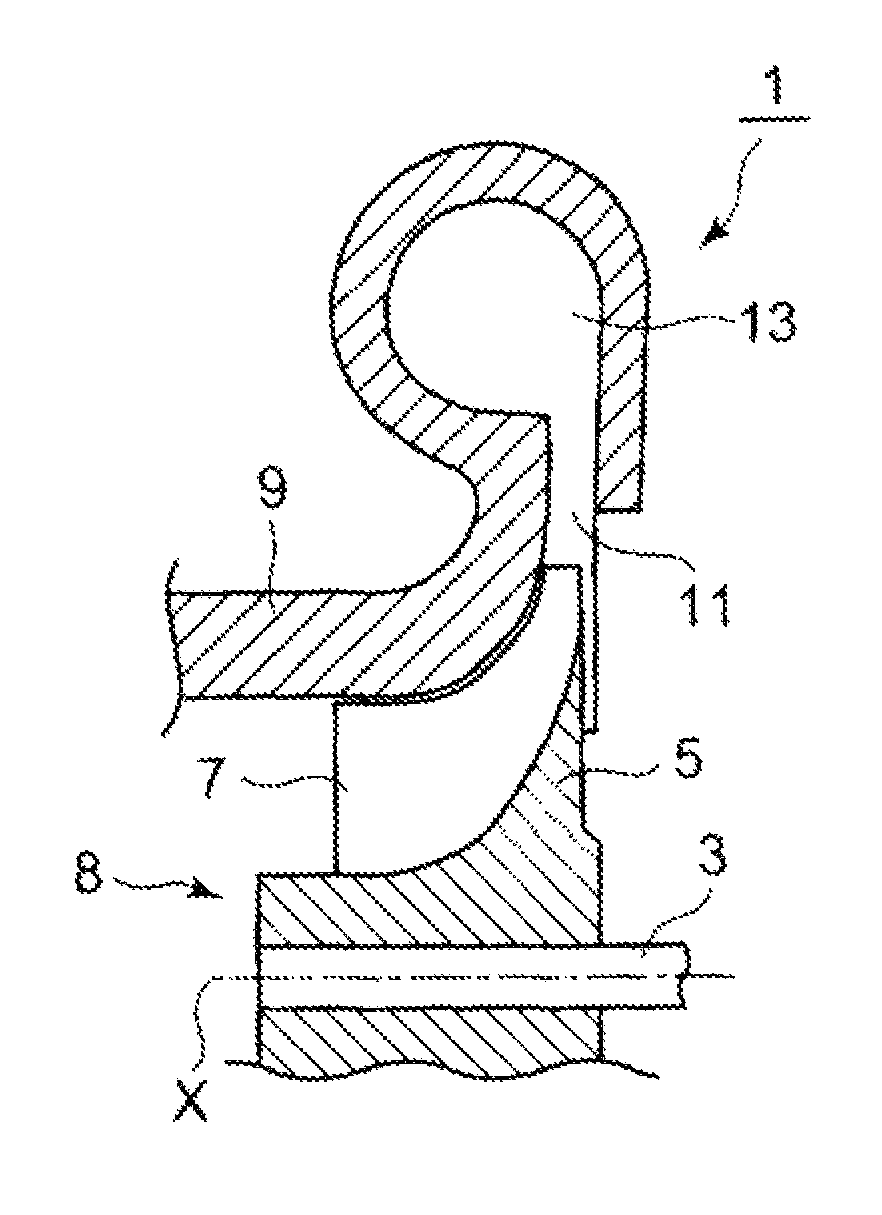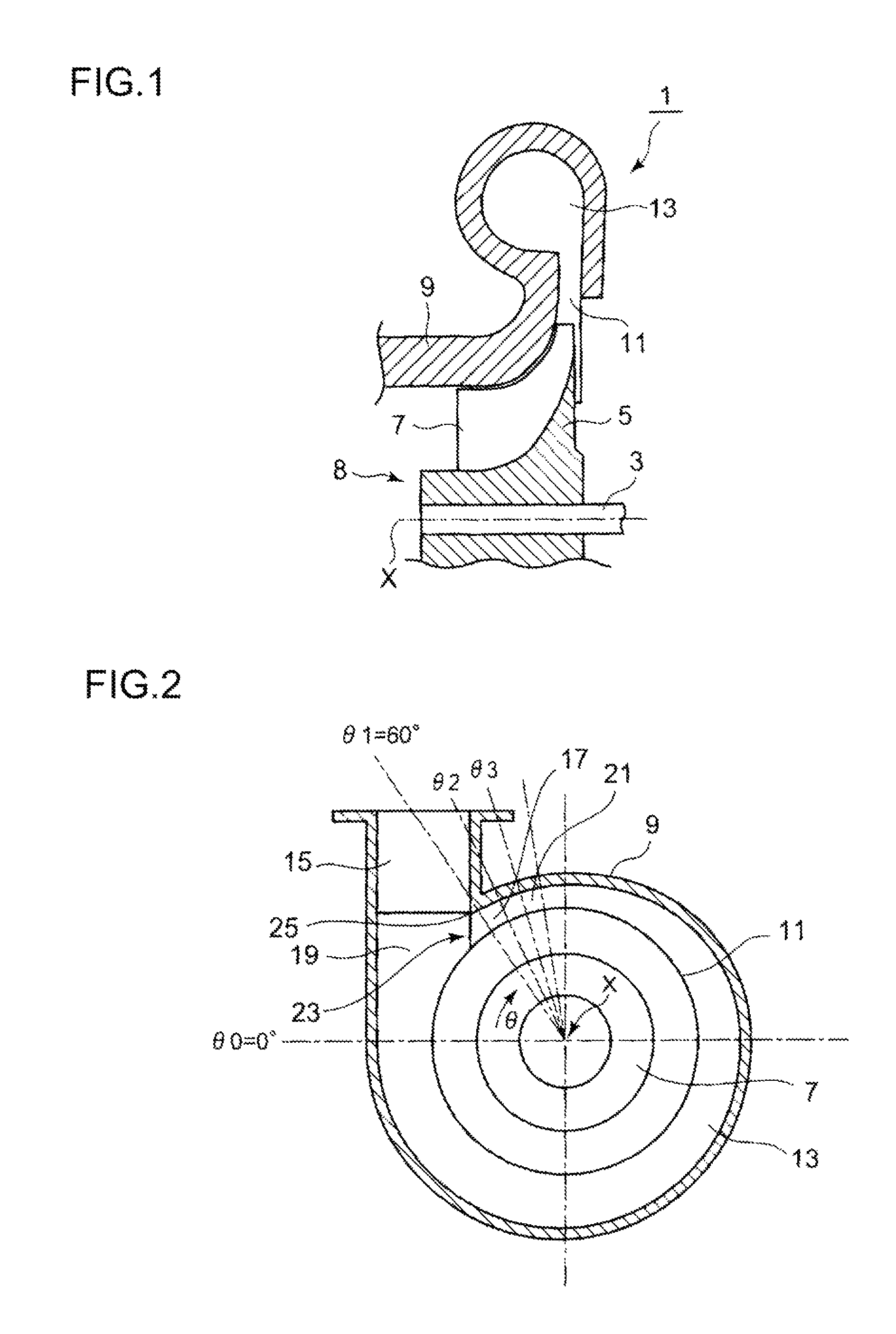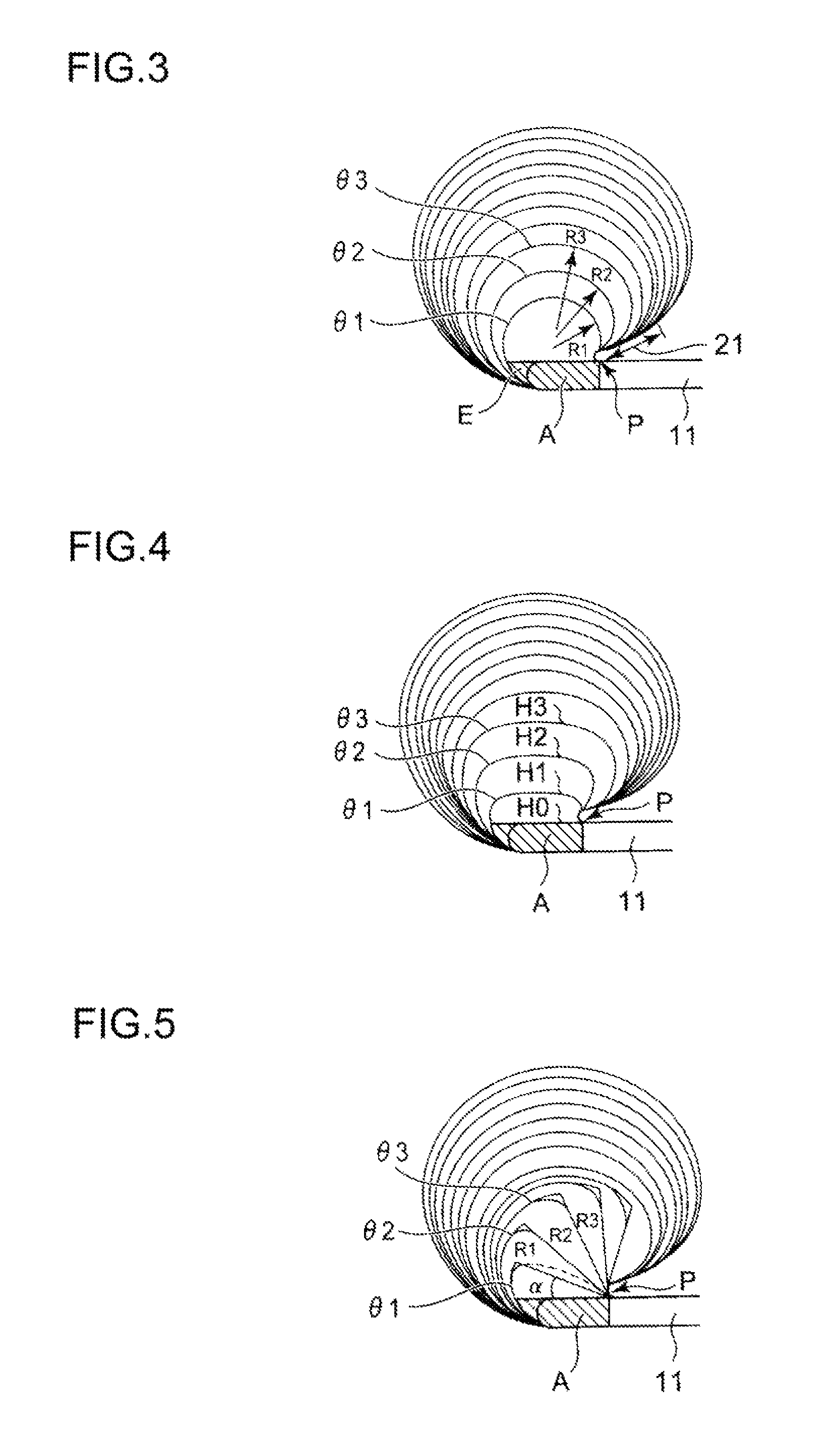Scroll structure of centrifugal compressor
a centrifugal compressor and scroll technology, applied in the direction of machines/engines, stators, liquid fuel engines, etc., can solve the problems of pressure loss, pressure loss, following pressure loss inside the scroll, etc., to prevent secondary flow loss, reduce flow area, and reduce the effect of recirculation
- Summary
- Abstract
- Description
- Claims
- Application Information
AI Technical Summary
Benefits of technology
Problems solved by technology
Method used
Image
Examples
first embodiment
[0047](First Embodiment)
[0048]FIG. 1 shows a schematic cross-sectional view of a centrifugal compressor 1 of the present invention. The centrifugal compressor 1 shown in this embodiment is applied to a turbocharger. A plurality of compressor blades 7 are formed on the surface of a hub 5 secured to a rotating shaft 3 driven by a turbine (not shown), with a compressor housing 9 covering the outside of the compressor blades 7. A diffuser 11 is formed on the radially outer side of the compressor blades 7, and a scroll passage 13 is formed around this diffuser 11.
[0049]FIG. 2 shows a cross section of the scroll passage 13. The compressor housing 9 includes the scroll passage 13 and a linear outlet passage 15 that communicates with the scroll passage 13. The cross-sectional area of the scroll passage 13 increases with an increase in spiral angle θ clockwise in FIG. 2 from the scroll start 17, and with spiral angle θ□□ exceeding 360°, the scroll reaches a scroll end 19. The scroll passage ...
second embodiment
[0070](Second Embodiment)
[0071]Next, a second embodiment will be described with reference to FIG. 4.
[0072]The characteristic feature here is that in the transformation of the cross-sectional shape of the flat connecting portion A into the circular shape at the transition part 21, a flat portion H is provided to part of the cross-sectional shape on the downstream side as shown in FIG. 4, this flat portion H gradually decreasing in the transformation into the circular shape.
[0073]In the first embodiment described above, the flat shape of the flat connecting portion A changes immediately into a small circular shape, after which the diameter of the circular shape increases gradually from R1. In the second embodiment, the flat portion H is provided in this transformation, wherein the flat portion H is decreased so that the shape gradually becomes circular.
[0074]More specifically, the passage has the flat connecting portion A at the position of the tongue 25 in FIG. 4, where the spiral an...
third embodiment
[0077](Third Embodiment)
[0078]Next, a third embodiment will be described with reference to FIG. 5.
[0079]In the first embodiment described above, the cross-sectional shape was gradually enlarged from a small circle, and in the second embodiment, the cross-sectional shape was gradually enlarged from a flat shape. In the third embodiment, the shape is changed in accordance with, or in conformity with the flow coming out of the diffuser 11 near the flow passage joint 23.
[0080]Near the flow passage joint 23, the flow coming out of the diffuser 11 does not exist all across the cross section of the scroll but flows closer to the outer circumference of the scroll in a spiraling motion inside the scroll.
[0081]Therefore, in the transition part 21, the flat shape of the flat connecting portion A is changed into a circular shape such that, while one flat surface of the flat shape having the same height as that of the diffuser 11 is matched with one surface in the height direction of the diffuse...
PUM
 Login to View More
Login to View More Abstract
Description
Claims
Application Information
 Login to View More
Login to View More - R&D
- Intellectual Property
- Life Sciences
- Materials
- Tech Scout
- Unparalleled Data Quality
- Higher Quality Content
- 60% Fewer Hallucinations
Browse by: Latest US Patents, China's latest patents, Technical Efficacy Thesaurus, Application Domain, Technology Topic, Popular Technical Reports.
© 2025 PatSnap. All rights reserved.Legal|Privacy policy|Modern Slavery Act Transparency Statement|Sitemap|About US| Contact US: help@patsnap.com



